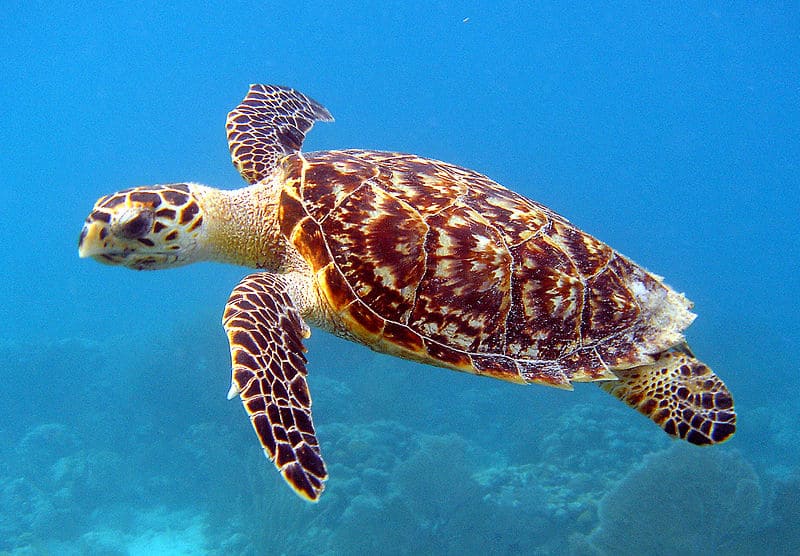
Hawksbill Sea Turtle Facts
- Most notably, the graceful and gorgeous Hawksbill Sea Turtle is a rapidly disappearing species. Because of this, the reptile has been listed as Critically Endangered by the IUCN since 1996.
- Furthermore, experts estimate that the population of this remarkable species has declined by about 80% in the last 100-135 years.
- Rather unsurprisingly, its numbers first began declining precipitously due to various human activities. Firstly, this occurred due to encroachment into its nesting areas, for coastal development.
- Now, however, the magnificent animal also faces threats to its continued existence from yet more sources. Most notably, these include the dire effects of both climate change and pollution, as well.
- Meanwhile, however, it is now a protected species. Therefore, the intentional capture or killing of it has been outlawed. Sadly, however, it still faces the environmental-based threats.
Related Articles
Hawksbill Sea Turtle Physical Description
Firstly, the amazing Hawksbill Sea Turtle displays only an extremely slight degree of sexual dimorphism. This trait, the remarkable creature happens to also share with most other related species of marine reptiles.
Additionally, an average adult specimen of this reptile individual attains a huge carapace length. In fact, this commonly equals about 3 ft (1 m). The powerful turtle also averages a weight of around 180 lb (80 kg).
Further, in general, the shell of this creature primarily displays an amber background in coloring. But, an irregular patterns of light and dark streaks also commonly appears on most individuals.
In addition, among males, the colors of the respective patterns typically display more intensely. While researchers have many theories as to the reason for this, the exact reasons have yet to be determined.
Finally, this remarkable turtle has one more astounding characteristic. It actually displays bioflourescent properties. As a result of this amazing fact, it currently remains the only known reptile with this characteristic.
- Kingdom: Animalia
- Class: Chordata
- Phylum: Reptilia
- Order: Testudines
- Family: Cheloniidae
- Genus: Eretmochelys
- Species: E. imbricata
Hawksbill Sea Turtle Distribution, Habitat, and Ecology
Firstly, the population of the Critically Endangered Hawksbill Sea Turtle has an extremely wide distribution. Due to this, it presently exists in most temperate and tropical seas and oceans throughout the world.
Also, this remarkably fascinating species of reptile typically inhabits regions of shallow coral reef. Furthermore, given the habitat preferences of coral, this also occurs most commonly in tropical regions.
However, individuals sometimes choose to inhabit caves or ledges. But the reason for this continues to elude researchers. But, even these usually appear in the immediate vicinity of coral reefs.
In addition, sea sponges typically comprise between 70 – 95% of the diet of the typical individual. This occurs despite the animal technically being omnivorous, thus indicating a preference.
The rest of its diet commonly includes various types of algae, sea anemones, jellyfish, and cnidarians. But, many of these species also remain quite poisonous to most creatures. It, however, evolved a natural immunity.
Finally, due to the fact that many of the creatures it consumes carries toxins, it has yet one more unique trait. Due to its diet, its own flesh quite often takes on a certain level of toxicity.
Species Sharing Its Range
Check out our other articles on Madagascar’s Astounding Inhabitants, Lava Cactus, Thorny Dragon, Blood Falls, Vietnamese Mossy Frog, African Penguin, Dune du Pilat, Australian Sea Lion
